Tributes as Doncaster pit nurse who cared for more than 5,000 miners dies at 89
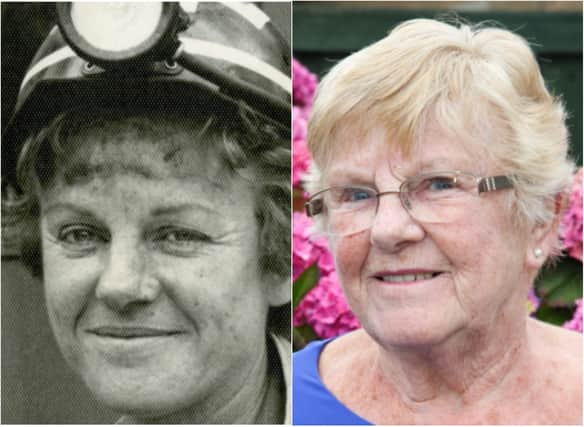

Sister Hart became a mother, sister, confidante and friend to the thousands of Doncaster miners under her care, including those on the picket line during the 1984-85 Miners’ Strike.
For fourteen years, Sister Hart worked as a nurse at Hatfield pit, where she was responsible for over 2,000 men, often going underground to bring out the injured and maimed.
Advertisement
Hide AdAdvertisement
Hide AdAt the start of her career, she worked at Brodsworth pit, where she had cared for 3,000 miners.
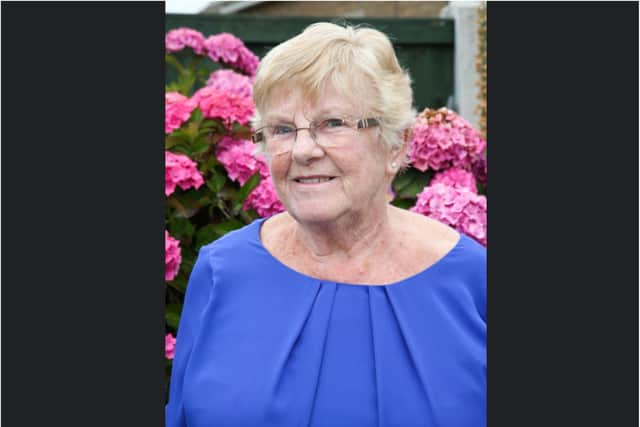

Joan Hart’s nursing career began in 1948 at the formation of the NHS and stretched right up until the late 1980s, when she finally retired. But her life changed in more ways than one when she accepted the nursing job at Hatfield pit in 1974.
She found that in order to become accepted by the men under her care she would have to become one of them.
Sister Hart rejected her traditional nurse’s uniform and instead donned a baggy miner’s overall, pit boots, hard hat and headlamp. She resolved always to go down to the injured miners and bring them out of the pit herself, which she did, time and time again.
Advertisement
Hide AdAdvertisement
Hide AdAs a professional ghostwriter, I first met Joan at a writer’s club, where I offered to help write her memoir before anecdotes of her vital role in the town’s mining history were lost forever.
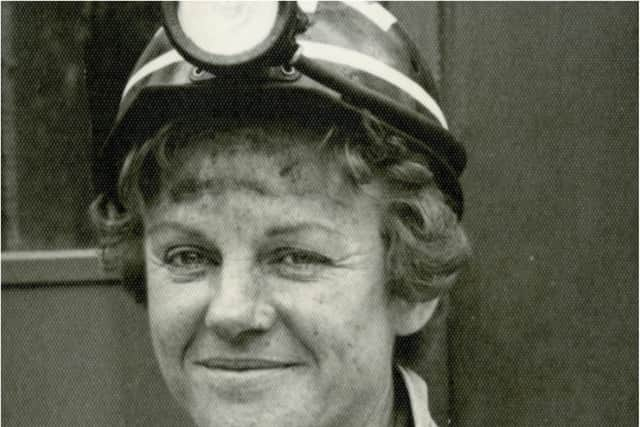

Her book: At the Coalface - The Memoir of a Pit Nurse, published in 2015 by HarperCollins, became an instant bestseller. As a result, Joan, who lived in Doncaster, was invited to speak at prestigious literary festivals in Wakefield, Leeds, Newcastle and Sheffield.
Doncaster Libraries threw a launch party for her book at the then newly-opened Cast theatre, where dignitaries and miners listened to her fascinating stories. She also spoke to library audiences and school children about her experiences underground.
Joan was later asked to become a living historian at the National Coal Mining Museum for England, which has also paid tribute to her, following her death.
Advertisement
Hide AdAdvertisement
Hide AdSister Hart was immortalised forever in Doncaster’s Printing Office Street as part of a statue to celebrate the town’s proud mining heritage. The statue features a six-foot bronze miner standing between two pieces of rock with a row of bronze portraits cast into the stone on each side.
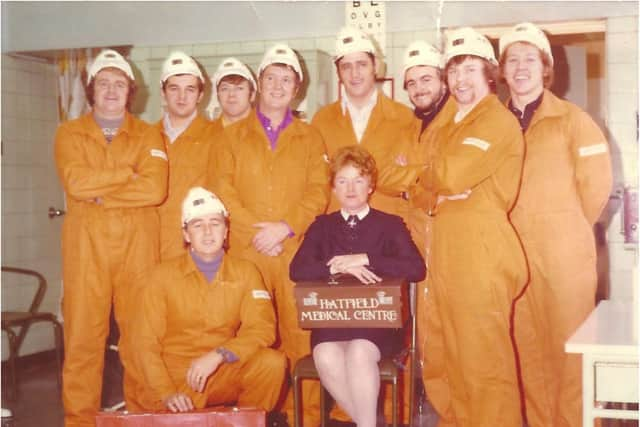

It was installed in February this year, and Joan was delighted to sit for acclaimed international artist and sculptor Laurence Edwards, who moulded her face along with 38 others in wax to later cast in bronze. The iconic piece of art is the first mining statue ever located in Doncaster, and it stands as a tribute to the miners to keep their stories alive for future generations.
Joan later told Brian, a mutual friend and former miner, whose poem features in her book: “I could have put my feet up, drinking whisky in front of an open fire but that would have been boring. The book gave me another chance at life.”
Joan Hart trained to become a nurse at the tender age of 16 - the youngest age girls could do so at that time. Born in 1932, in a house in Bentley, Joan’s entry into the world was more unusual than most. The heavy rain had caused the River Don to burst its banks, so the neighbourhood had been flooded and her family were forced to live in rooms upstairs.
Advertisement
Hide AdAdvertisement
Hide AdWhen her mother went into labour, the midwife had to be ferried in by boat, climb a ladder and then crawl through an upstairs bedroom window just to deliver the baby. When Joan was a teenager she stepped in to help raise her siblings, Tony and Ann, so that their dad, Harry, a foreman at Brodsworth pit, could go to work.
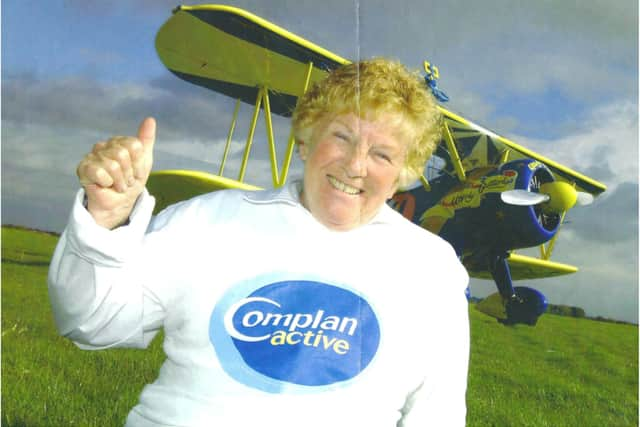

It was during this time that Joan decided to become a nurse.
Aged 16, she left Doncaster to attend a nurses’ training college in Huddersfield. With the recent formation of the NHS there was a huge demand for trainee nurses.
Joan explained to me: “Back then, nursing was a vocation rather than a profession. We were taught how to clean and disinfect a room properly, how to launder bloodied sheets, even how to cook what we called ‘invalid food’, including beef broth and junket, which was a type of blancmange.”
Advertisement
Hide AdAdvertisement
Hide AdAfter two years’ training, she decided she wanted to be closer to her mother so she wrote to the General Nursing Council and asked for a transfer from Huddersfield to Hammersmith Hospital, in London. #
Back then, the nurses’ accommodation was situated directly across from Wormwood Scrubs so the young women were told to keep their curtains closed at all times to stop prisoners from peering in. Wormwood also had regular escaped convicts and the hospital would regularly have to go into lockdown to keep them out of the wards.
During her time at Hammersmith, Joan witnessed many remarkable things including the successful separation of conjoined twins and one of the first ever kidney transplants. She later met her husband Peter, who she married in 1954. Joan’s mother had wanted her to marry a doctor and so decided that her daughter had married ‘beneath her’.
To make matters worse, Joan’s mother-in-law didn’t like Joan very much, either.
Advertisement
Hide AdAdvertisement
Hide Ad“There were lots of arguments, so I decided to pack up my things and come back up north to Doncaster,” she told me.
At first, Joan worked in a nursing home, and later as a deputy Matron at Elmfield House, which had a nursery caring for babies, mainly from one-parent families. By this time, it was 1956, the mines had been nationalised nine years earlier, and Brodsworth pit was looking to improve its safety record. It was in the process of building a brand-new medical centre, so it needed a qualified nurse to run it. Joan’s father put her name forward and she got the job.
She was only in her early twenties and in charge of over 3,000 miners.
Unsurprisingly, the miners initially found it difficult to seek medical advice from a 24-year-old female nurse.
Advertisement
Hide AdAdvertisement
Hide AdJoan told me: “They’d always relied on a man called Bert, who had a hut by the shaftside. Even though I had a brand-new medical centre, containing all the latest sterile equipment, the men continued to consult Bert. In a way, I didn’t blame them, because Bert was like the local doctor – everyone went to him - and what he didn’t know about first aid wasn’t worth knowing.”
Sister Hart had not only upset the miners with her young age, she’d also painted the waiting room a bright sunshine yellow instead of the regulation navy blue. To say the men were appalled would be an understatement.
“They kept the walls navy blue because it hid all the muck and the blood.” Joan laughed as she recalled the horrified look on their faces.
Sister Hart had her work cut out in more ways than one but slowly she won the trust of the men and soon they had come to depend on both her and Bert as a team.
Advertisement
Hide AdAdvertisement
Hide AdSadly, a year later, Joan’s father-in-law suffered a fatal heart attack and her husband Peter was forced to return to London. Sister Hart left Brodsworth pit and transferred back to Hammersmith hospital, in London, where she became a Cancer Research nurse, as they were called at that time.
She was put in charge of the hospital’s radiation unit, which helped treat children not only with cancer, but those with disfiguring birthmarks. Sometimes the children would become distressed, so Joan would cuddle them on her knee during treatment.
The regulation lead apron would often scare the youngsters, so she refused to wear it. In a cruel irony, many years later and unable to have children of her own, Joan often wondered if those extra cuddles and constant exposure to radiation had left her infertile.
Peter developed heart problems of his own so Joan decided to get him out of London. She applied for a job at Hatfield Colliery, Doncaster, where she became the Sister in charge of the medical centre, which she ran along with three trusty Medical Room Attendants.
Advertisement
Hide AdAdvertisement
Hide Ad“My heart was always with the pits and the miners.” Joan told me as I wrote her book. “Hospitals never held the same kind of appeal.”
Sister Hart started at Hatfield pit 47 years ago, and was responsible for the health and wellbeing of over 2,000 men. She also performed medical checks on young cadets who started at the pit, aged just 16. Much to the men’s disgust, she also painted the waiting room at Hatfield daffodil yellow and, during her first week, got rid of the ‘dead body table’.
The table came back to haunt her a week or so later when a miner suffered a fatal heart attack underground and there was nothing to put his body on.
She explained: “We used the stretcher trestles and the doctor certified death. Before the miner’s wife arrived with the NUM representative, I washed his face out of both necessity and respect.
Advertisement
Hide AdAdvertisement
Hide Ad"I decided from that moment on that whenever a man was injured or trapped underground, I would always go to him and help bring him out myself.”
True to her word, and dressed in a overalls, pit boots, hard hat, and headlamp, over the years that followed, Joan always went down to treat her men. It didn’t matter how badly injured they were or how deep in the mine they were trapped, they always knew that Sister Hart would go to them.
She not only saved the lives of countless men, she was first nurse on the scene at Bentley Pit Disaster, in November 1978, which claimed the lives of seven men and left a further 19 injured.
Sister Hart also helped perform underground amputations on miners, hundreds of feet below, in the pitch black to save their lives. However, her remarkable work didn’t stop there.
Advertisement
Hide AdAdvertisement
Hide AdShe became so trusted that she held impromptu underground counselling sessions for miners beneath the chocks, where they would discuss everything from marriage to family health problems.
Sister Hart continued to care for her men during the bitter miners’ strike which stretched from March 1984-85. She also organised a toy collection so that the children of striking miners would have presents to open on Christmas Day.
During the strike, she recalled one incident in the medical centre; two Metropolitan Police officers had brought in a young miner, who had sustained a gash to the back of his head.
“The Met police were neither liked nor trusted by the striking miners,” Joan explained, “so when they dragged Nigel into the medical centre for me to treat, I demanded they take off his handcuffs first. They refused, saying he was ‘their prisoner’. I turned to them and said, ‘yes, but right here, right now, you are in my medical centre so I want those cuffs off!
Advertisement
Hide AdAdvertisement
Hide Ad"They seemed shocked, being told what to do by a nurse and a small one at that, but they realised I meant business and did as I said.”
It later transpired that the young miner had been walking along the street to buy a newspaper when he’d been cut down by a police truncheon. Sister Hart realised the two-inch gash to his head would require stitches, so she told him to use the phone to let his dad know where he was.
“Again, the Met police officers wouldn’t let him use the phone so I picked it up in front of them and made the call myself. I told Nigel’s dad to meet his son at the hospital because I wanted to be sure the officers took him there, instead of flinging him straight into police cells.”
As a nurse, Joan belonged to the British Association of Colliery Management (BACM) union and so was forbidden to go on strike. Had she done so, she would have simply lost her job.
Advertisement
Hide AdAdvertisement
Hide AdInstead, Sister Hart continued to run the medical centre so that she could treat injured men both inside and outside the gates. But her heart always remained with the miners on the picket line, who continued to treat her with respect throughout the year-long strike.
One day, Joan was wandering around Hatfield colliery yard when she spotted a group of striking miners digging for coal. She knew what they were doing was technically classed as ‘theft’ but promised she wouldn’t say a word about them or the missing coal and, true to her word, she never did.
“I felt for them; it was winter and it was freezing cold. These fellas weren’t thieves - they were decent, hardworking men, who were just trying to keep their families warm. They were my colleagues and my friends, and I never forgot that.”
But Joan says she was choked up when the men returned to work a year later in March 1985.
Advertisement
Hide AdAdvertisement
Hide Ad“I watched as they marched back into work together. They were as united as a family, which is exactly what they were and had always been to each other and to me. They may have lost the strike but they weren’t out, not by a long chalk. They were some of the bravest and most remarkable men I have ever had the privilege of working with. It was the camaraderie of the men and the strong friendships they’d formed which helped them through even the toughest of times.
“Working at Hatfield pit remained one of the happiest times of my life. The men used to love taking the mickey and pulling practical jokes on me, but I gave as good as I got and they came to respect me. I loved each and every single moment.”
During Joan’s time at the pit, she also did a shaft inspection with the surveyors, chained to the winding gear on top of the cage. She says that when she eventually took voluntary redundancy from Hatfield in 1988, she missed both the excitement of pit life and the camaraderie of her former colleagues.
After leaving Hatfield, Sister Hart worked as a practice nurse in Stainforth, looking after pensioners aged 75 and over. By then, she was almost 60, so the irony of caring for people only a few years older wasn’t lost on her.
“They called me the ‘wrinkly nurse’ and the name stuck.”
Advertisement
Hide AdAdvertisement
Hide AdAfter retiring from the GP’s practice, Joan did voluntary work at Doncaster Royal Infirmary, but, because of her age, the hospital insurance wouldn’t cover her to carry out simple nursing procedures, such as taking blood pressures and administering eye drops.
Instead, she says she was asked to run errands. Frustrated and feeling completely under used, Joan decided to enter a competition run by Age Concern. It posed the question ‘what have you always wanted to do?’
So, as a bit of a joke, she wrote ‘wing walking’.
“You can imagine my surprise when they told me I’d actually won and I had to get myself to an airfield in Cirencester!”
At 76-years-young, Joan not only did wing walking, she also tried her hand at sky diving twice, raising over £1,000 for Yorkshire Air Ambulance.
Advertisement
Hide AdAdvertisement
Hide Ad“I wanted to do a third parachute jump for my 80th birthday but my doctor wouldn’t let me!” she told me, mischievously.
In 2015, the book on Joan’s life - At the Coalface - The Memoir of a Pit Nurse - was so in demand that she had nine publishers bidding for the rights to it. A kind of Call the Midwife but with pit boots on, it told her own remarkable story.
From fainting deputies, a miner feigning illness to watch Doncaster Rovers play at home, to a man with three testicles, Sister Hart saw it all. Her book also celebrated the unique friendship and camaraderie of the miners set during a time when loyalty and friendships were everything.
As we finished writing Joan’s book, Hatfield pit was still open and wasn’t due to close for at least another year. Sadly, it shut almost the same week as the book’s release, which made it even more poignant for her.
Advertisement
Hide AdAdvertisement
Hide AdJoan told me then: “Sadly, I belonged to a different time and I miss it greatly. I miss the banter of the men, the miners’ jokes, and their (often) filthy language!”
She explained how she often bumped into the occasional ex-miner while catching the bus. One day, she was on the path when a huge lorry pulled up at the side of her and the driver wound down his window.
“Ey up, Sister, how are you doing?”
When Joan asked the ex-miner how he remembered her after thirty long years, he replied: “You were the only one who ever did owt with my ears. No one else would touch them!”
Of course, Sister Hart was delighted because all she had ever wanted to do was to care for people.
Joan Hart born 18 May 1932 - died 26th June 2021.
Advertisement
Hide AdAdvertisement
Hide Ad● With restrictions now lifted, Joan Hart’s family would be delighted to see as many of her friends, mining colleagues and their families attend her funeral, which will be held at 10.40am on Monday 12th July, at St Peter and St Paul’s Church, Church Road, Barnby Dun, Doncaster.